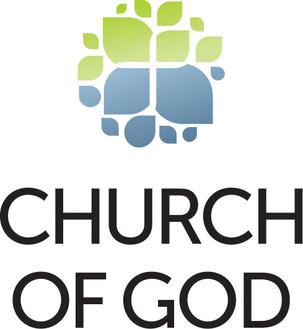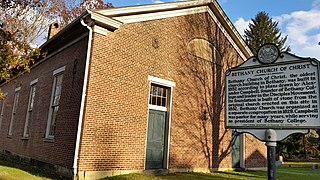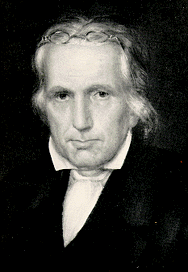Related Research Articles
Congregational polity, or congregationalist polity, often known as congregationalism, is a system of ecclesiastical polity in which every local church (congregation) is independent, ecclesiastically sovereign, or "autonomous". Its first articulation in writing is the Cambridge Platform of 1648 in New England.
A creed, also known as a confession of faith, a symbol, or a statement of faith, is a statement of the shared beliefs of a community which summarize its core tenets.

The Christian Church (Disciples of Christ) is a mainline Protestant Christian denomination in the United States and Canada. The denomination started with the Restoration Movement during the Second Great Awakening, first existing during the 19th century as a loose association of churches working toward Christian unity. These slowly formed quasi-denominational structures through missionary societies, regional associations, and an international convention. In 1968, the Disciples of Christ officially adopted a denominational structure. At that time, a group of churches left in order to remain nondenominational.

Unitarian Universalism is a liberal religious movement characterized by a "free and responsible search for truth and meaning". Unitarian Universalists assert no creed, but instead are unified by their shared search for spiritual growth. Unitarian Universalists do not have an official, unified corpus of sacred texts. Unitarian Universalist congregations include many atheists, agnostics, deists, and theists; there are churches, fellowships, congregations, and societies around the world.

The Church of the Nazarene is a Christian denomination that emerged in North America from the 19th-century Wesleyan-Holiness movement within Methodism. It is headquartered in Lenexa, Kansas. With its members commonly referred to as Nazarenes, it is the largest denomination in the world aligned with the Wesleyan-Holiness movement and is a member of the World Methodist Council.

The Restoration Movement is a Christian movement that began on the United States frontier during the Second Great Awakening (1790–1840) of the early 19th century. The pioneers of this movement were seeking to reform the church from within and sought "the unification of all Christians in a single body patterned after the church of the New Testament."
Non-denominational Christianity consists of churches, and individual Christians, which typically distance themselves from the confessionalism or creedalism of other Christian communities by not formally aligning with a specific Christian denomination.
A Christian denomination is a distinct religious body within Christianity that comprises all church congregations of the same kind, identifiable by traits such as a name, particular history, organization, leadership, theological doctrine, worship style and, sometimes, a founder. It is a secular and neutral term, generally used to denote any established Christian church. Unlike a cult or sect, a denomination is usually seen as part of the Christian religious mainstream. Most Christian denominations refer to themselves as churches, whereas some newer ones tend to interchangeably use the terms churches, assemblies, fellowships, etc. Divisions between one group and another are defined by authority and doctrine; issues such as the nature of Jesus, the authority of apostolic succession, biblical hermeneutics, theology, ecclesiology, eschatology, and papal primacy may separate one denomination from another. Groups of denominations—often sharing broadly similar beliefs, practices, and historical ties—are sometimes known as "branches of Christianity". These branches differ in many ways, especially through differences in practices and belief.

The Church of God , also called the Church of God Ministries, is an international holiness Christian denomination with roots in Wesleyan-Arminianism and also in the restorationist traditions. The organization grew out of the evangelistic efforts of several Holiness evangelists in Indiana and Michigan in the early 1880s, most notably Daniel Sidney Warner.

The Churches of Christ, also commonly known as the Church of Christ, is a loose association of autonomous Christian congregations located around the world. Typically, their distinguishing beliefs are that of the necessity of baptism for salvation and the prohibition of musical instruments in worship. Many such congregations identify themselves as being nondenominational. The Churches of Christ arose in the United States from the Restoration Movement of 19th-century Christians who declared independence from denominations and traditional creeds. They sought "the unification of all Christians in a single body patterned after the original church described in the New Testament."
Church of Christ may refer to:

The Unity of the Brethren is a Protestant church formed in the 1800s by Czech immigrants to Texas, where the church is still based, in the tradition of Moravian Church.

The International Churches of Christ (ICOC) is a body of decentralized, co-operating, religiously conservative and racially integrated Christian congregations. In March 2024, the ICOC numbered their members at 112,000. Originating from the Stone-Campbell Restoration Movement, the ICOC emerged from the discipling movement within the Churches of Christ in the 1970s. Kip McKean, a key figure until 2003, expanded the church from Gainesville to Boston and it quickly became one of the fastest growing Christian movements with a heavy focus on US college campuses. Under his leadership, the ICOC experienced rapid growth but also faced criticism.
The group of churches known as the Christian Churches and Churches of Christ is a fellowship of congregations within the Restoration Movement that have no formal denominational affiliation with other congregations, but still share many characteristics of belief and worship. Churches in this tradition are strongly congregationalist and have no formal denominational ties, and thus there is no proper name that is agreed upon and applied to the movement as a whole. Most congregations in this tradition include the words "Christian Church" or "Church of Christ" in their congregational name. Due to the lack of formal organization between congregations, there is a lack of official statistical data, but the 2016 Directory of the Ministry documents some 5000 congregations in the US and Canada; some estimate the number to be over 6,000 since this directory is unofficial. By 1988, the movement had 1,071,616 members in the United States.

Thomas Campbell was a Presbyterian minister who became prominent during the Second Great Awakening of the United States. Born in County Down, he began a religious reform movement on the American frontier. He was joined in the work by his son, Alexander. Their movement, known as the "Disciples of Christ", merged in 1832 with the similar movement led by Barton W. Stone to form what is now described as the American Restoration Movement.
The Christian Connection was a Christian movement in the United States of America that developed in several places during the late 18th and early 19th centuries, composed of members who withdrew from other Christian denominations. It was influenced by settling the frontier as well as the formation of the new United States and its separation from Great Britain. The Christian Connection professed no creed, instead relying strictly on the Bible.

The Evangelical Christian Church(Christian Disciples) as an evangelical Protestant Canadian church body. The Evangelical Christian Church's national office in Canada is in Waterloo, Ontario.
Christian universalism is a school of Christian theology focused around the doctrine of universal reconciliation – the view that all human beings will ultimately be saved and restored to a right relationship with God. "Christian universalism" and "the belief or hope in the universal reconciliation through Christ" can be understood as synonyms. Opponents of this school hold that eternal damnation is the ultimate fate of some or most people.
Unitarianism, as a Christian denominational family of churches, was first defined in Poland-Lithuania and Transylvania in the late 16th century. It was then further developed in England and America until the early 19th century, although theological ancestors are to be found as far back as the early days of Christianity. It matured and reached its classical form in the middle 19th century. Later historical development has been diverse in different countries.
References
- ↑ https://web.archive.org/web/20160310122315fw_/http://conglomination.com/cg/SectDetail.asp?SMName=Christian+Congregation%2C+Inc%2E
- ↑ "Archived copy" (PDF). Archived from the original (PDF) on 2017-01-10. Retrieved 2016-06-12.
{{cite web}}: CS1 maint: archived copy as title (link) - ↑ "INBiz: Your one-stop source for your business".
- ↑ "Indianapolis News 8 December 1900 — Hoosier State Chronicles: Indiana's Digital Historic Newspaper Program".
- ↑ Herald of Gospel Liberty. 1909.
- ↑ "Kokomo Tribune Newspaper Archives, Sep 1, 1923, p. 5". September 1923.
- ↑ "Puckett Cemetery, Center TWP, Howard Co., IN".
- ↑ Melton, J. Gordon. Encyclopedia of American Religions, p. 533, Gale Publishing, Detroit, 1993.
- 1 2 "History of Howard County, Indiana". webapp1.dlib.indiana.edu.
- ↑ Roades, Ron. The Complete Guide to Christian Denominations, pp. 121-122, Harvest House Publishers, Eugene, OR, 2005.
- ↑ "The Rev. Ora Wilbert Eads". 2017-01-03. Retrieved 2024-06-14.
- ↑ Roades, Ron, The Complete Guide to Christian Denominations, p. 133, Harvest House Publishers, Eugene, OR, 2015.
- Adherents Religions Directory
- The Complete Guide to Christian Denominations
- Mead, Frank S. and Hill, Samuel S. Handbook of Denominations. Thirteenth Edition. Nashville, 2010.
- Melton, J. Gordon. Encyclopedia of American Religions. Detroit, 1987.
- Christian Congregation, Inc., The
- Yearbook of American and Canadian Churches Archived 2017-01-10 at the Wayback Machine